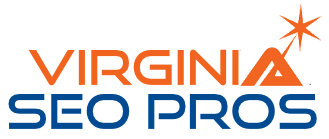Local & Regional SEO Ranking Factors
What Really Moves the Needle in Local Search
If you’re trying to get your business in front of more local or regional customers, understanding how local SEO ranking factors work is key. Whether you’re a service provider in Virginia Beach or a boutique in Chesapeake, showing up in Google’s Map Pack and top search results can mean the difference between being invisible and getting booked solid.
Let’s dive into the most important factors that help your business rank locally and regionally—and how you can make them work in your favor.
What Is Local SEO (and How Is It Different from Traditional SEO)?
While traditional SEO focuses on improving visibility globally or nationally, local SEO zeroes in on getting your business found by people nearby.
If someone searches for:
-
“Pizza near me”
-
“Chiropractor in Norfolk”
-
“Best roofer in Virginia Beach”
Google uses local signals to decide which businesses show up—especially in the Map Pack (those top 3 map listings with reviews, address, and call buttons).
So instead of just thinking “keywords,” you now need to think location + trust + relevance.
Top Ranking Factors for Local and Regional SEO
1. Google Business Profile (GBP) Optimization
Your Google Business Profile is your digital storefront. It’s often the first impression customers get when they search for your services.
Key tips:
-
Use your real business name (no extra keywords)
-
Choose the right category (primary and secondary)
-
Add a detailed description with local keywords
-
Include high-quality images
-
Keep hours, services, and contact info up-to-date
-
Post updates regularly
2. NAP Consistency (Name, Address, Phone)
Google wants to make sure your business is legit. One way it checks is by seeing if your NAP info is consistent across the web.
Pro tip:
-
Use the same formatting everywhere: Google, Yelp, Facebook, directories, etc.
-
Avoid abbreviations in one place and full words in another (e.g., “St.” vs. “Street”)
-
Add schema markup to your site to help Google verify your NAP
3. Online Reviews & Engagement
Google pays close attention to what customers say about your business—and how often.
How reviews help rankings:
-
Quantity – More reviews = more trust
-
Recency – Keep reviews coming in regularly
-
Quality – 4- and 5-star reviews signal customer satisfaction
-
Responses – Replying to reviews (good and bad) shows engagement
Don’t be shy—ask happy customers to leave a quick review on Google!
4. Relevance Through On-Page SEO & Keyword Usage
Google needs to understand what your business does and who you serve.
On-page SEO tips:
-
Use keyword-rich headers (H1, H2) with local modifiers (e.g., “SEO Services in Hampton Roads”)
-
Mention cities, neighborhoods, and landmarks naturally in your content
-
Include service-specific pages and FAQs that answer local questions
-
Add location-specific blog posts to boost regional relevance
5. Internal Linking & Silo Structure
Internal links help Google crawl your site and understand how your content connects.
Boost SEO with:
-
A homepage that links to your main services and city-specific pages
-
City/service “silo” pages linking back to the main services page
-
Strategic anchor text with keywords and locations (e.g., “Virginia Beach plumbing repair”)
⚡ 6. Page Speed & Mobile Optimization
A slow, clunky site won’t just frustrate users—it also pushes you down in rankings.
Make your site faster:
-
Compress images and use modern formats (like WebP)
-
Minimize code and plugins
-
Use a fast hosting provider
-
Test your site with Google PageSpeed Insights
-
Make sure your site looks great and functions smoothly on mobile devices
7. Proximity to the Searcher
One of the biggest local ranking factors is how close your business is to the person searching. Google doesn’t show a business 30 miles away unless it’s the only relevant option.
What you can do:
-
Make sure your address and service area are clearly listed
-
If you serve multiple cities, create individual location pages
-
Use geotagged images and content that references local events, landmarks, or neighborhoods
️ 8. Citations & Backlinks
Local citations are mentions of your business (with or without a link). Backlinks are actual links pointing to your site.
Local backlink tips:
-
Get listed in local business directories (Yelp, BBB, Angi)
-
Join and get links from local Chambers of Commerce or business groups
-
Sponsor or get featured by local blogs or news outlets
-
Encourage happy customers to share your content or link to your site
Putting It All Together
If you’re just starting out, focus on the “Big 3”:
-
Optimize your Google Business Profile
-
Get consistent NAP citations
-
Ask for and respond to reviews
Then build on that foundation with great content, solid internal linking, mobile-friendliness, and local backlinks.
Final Thoughts: Local SEO = Local Success
When you nail local and regional SEO, you’re not just improving rankings—you’re building trust, visibility, and a steady flow of local customers. The best part? Many of these strategies are completely DIY-friendly, especially if you have a clear roadmap.
Need help building your local SEO strategy or silo page structure? Virginia SEO Pros is always here to guide you through it.
Let’s get your business found—right where your customers are searching
